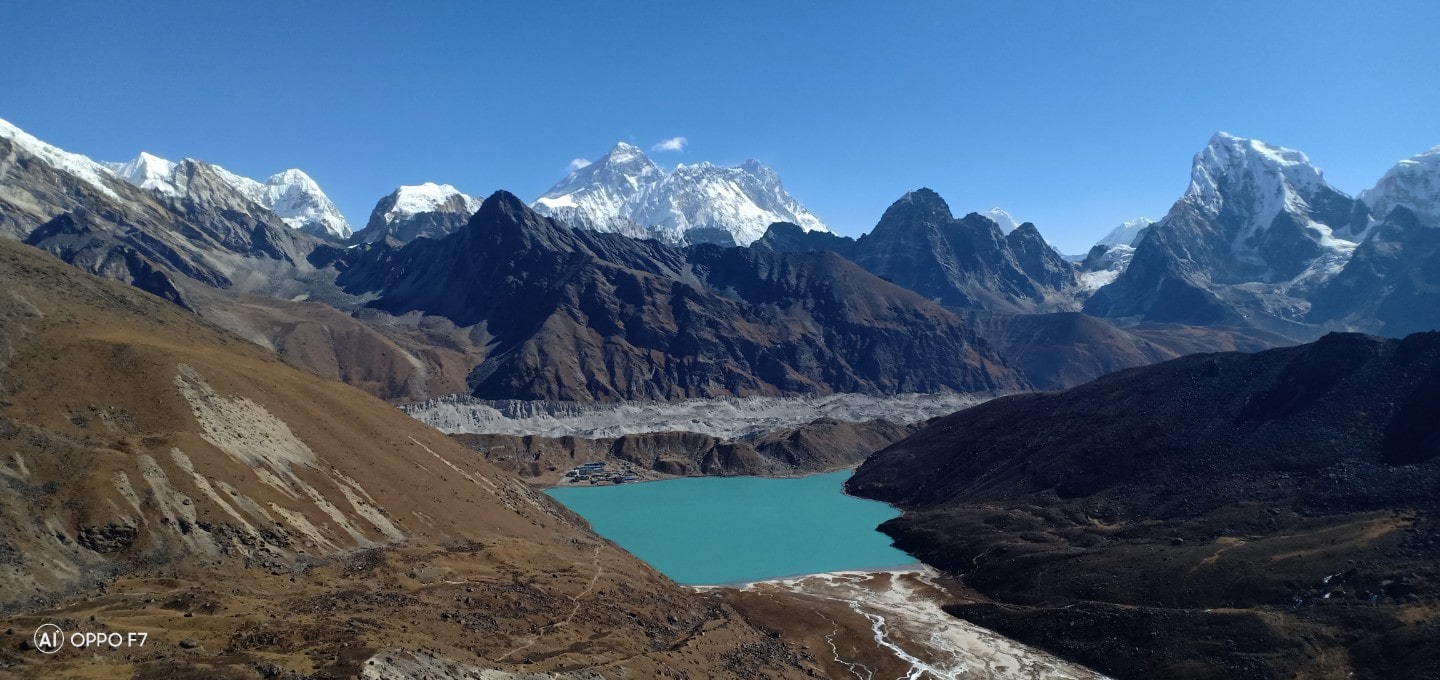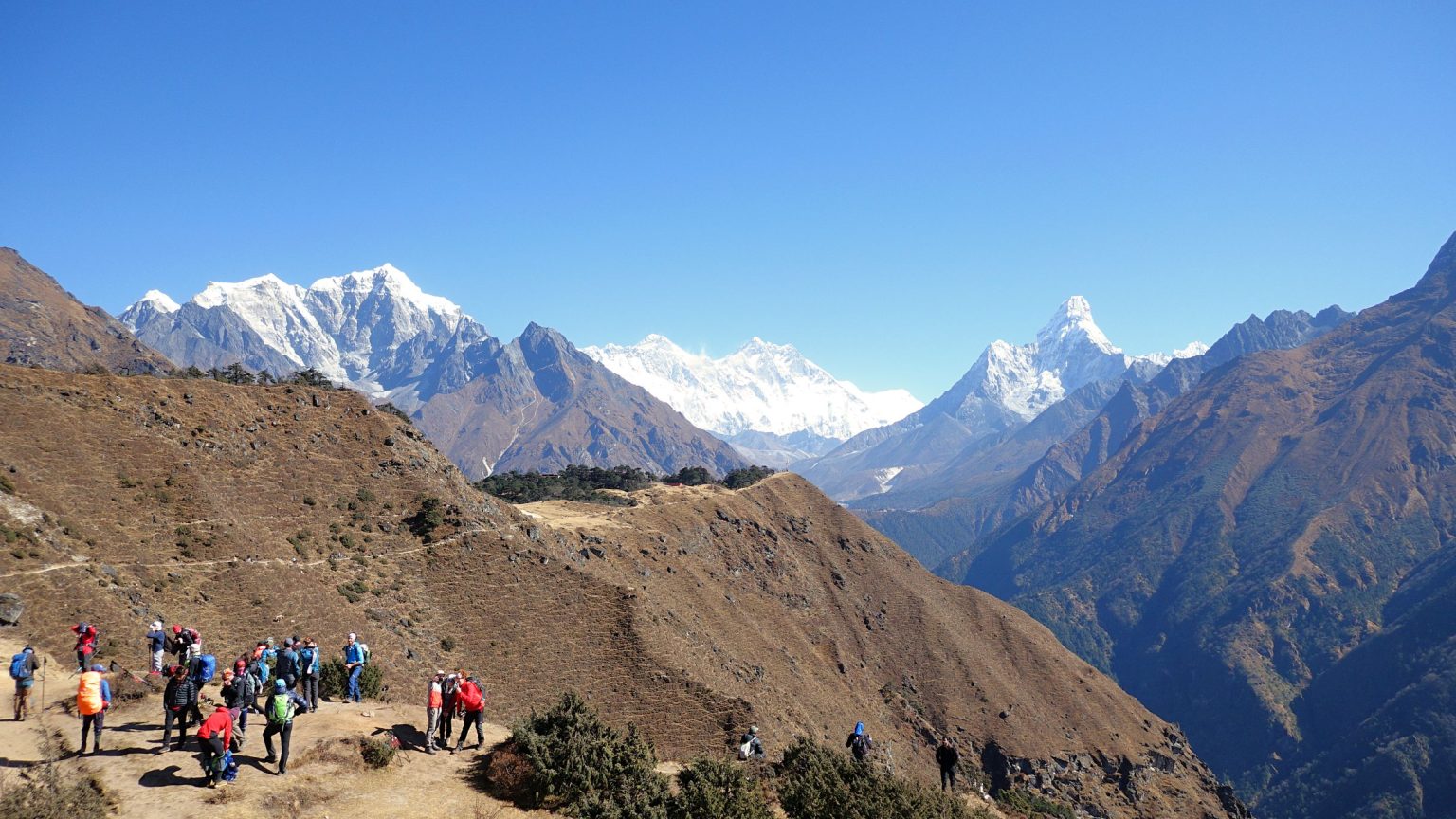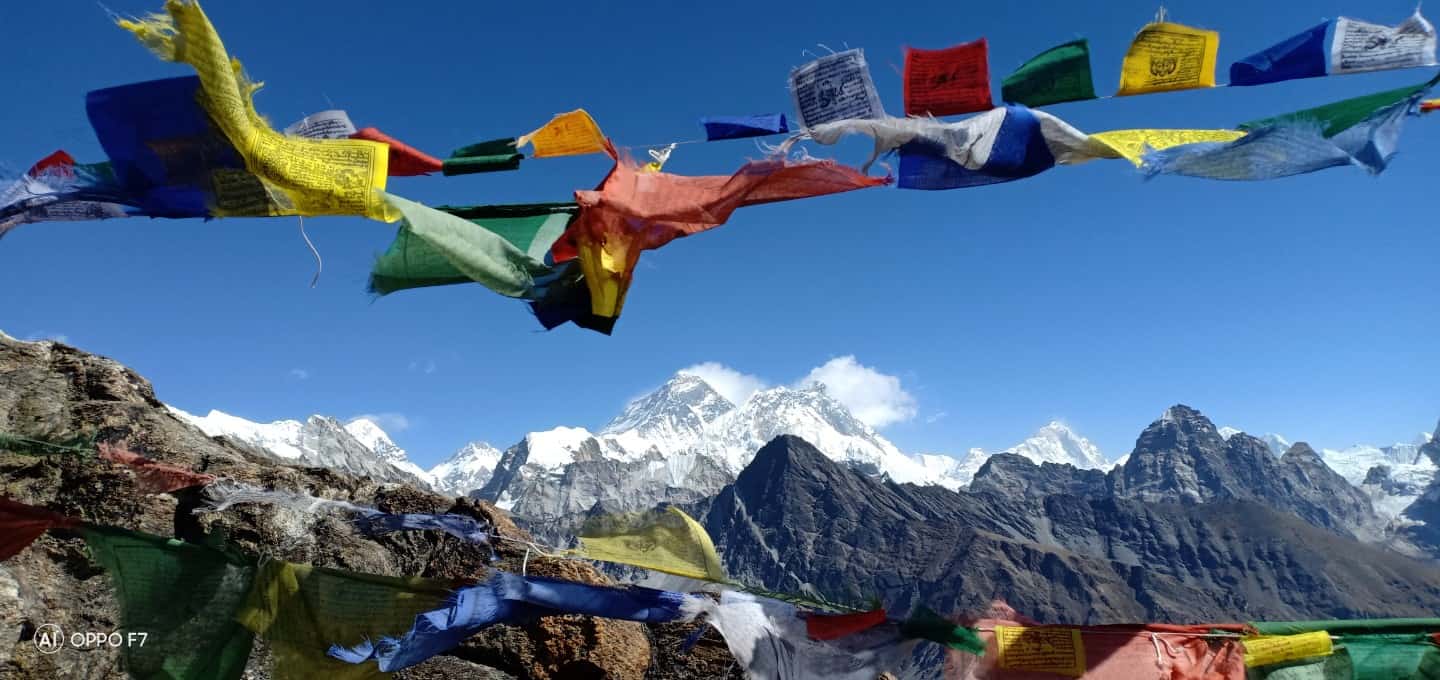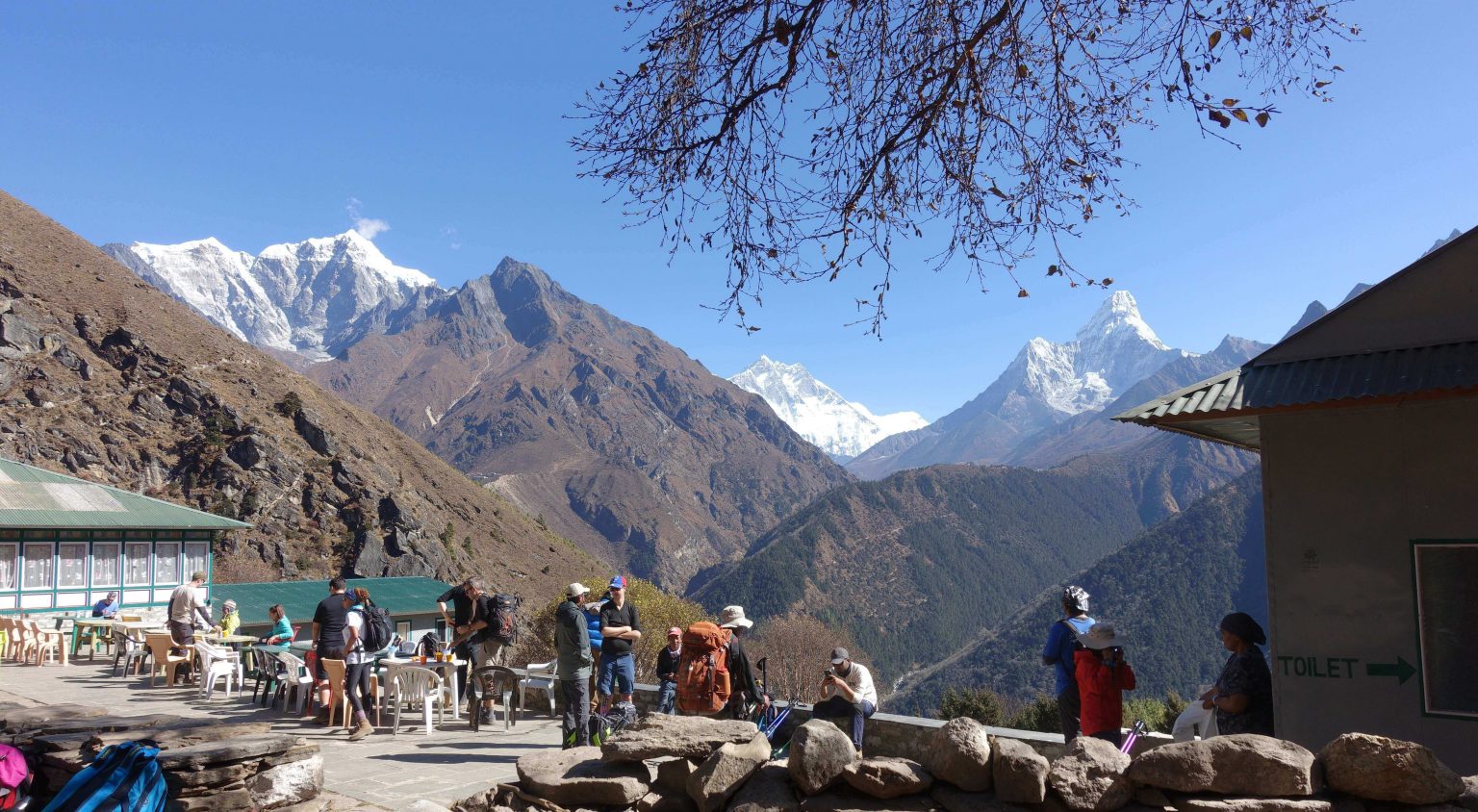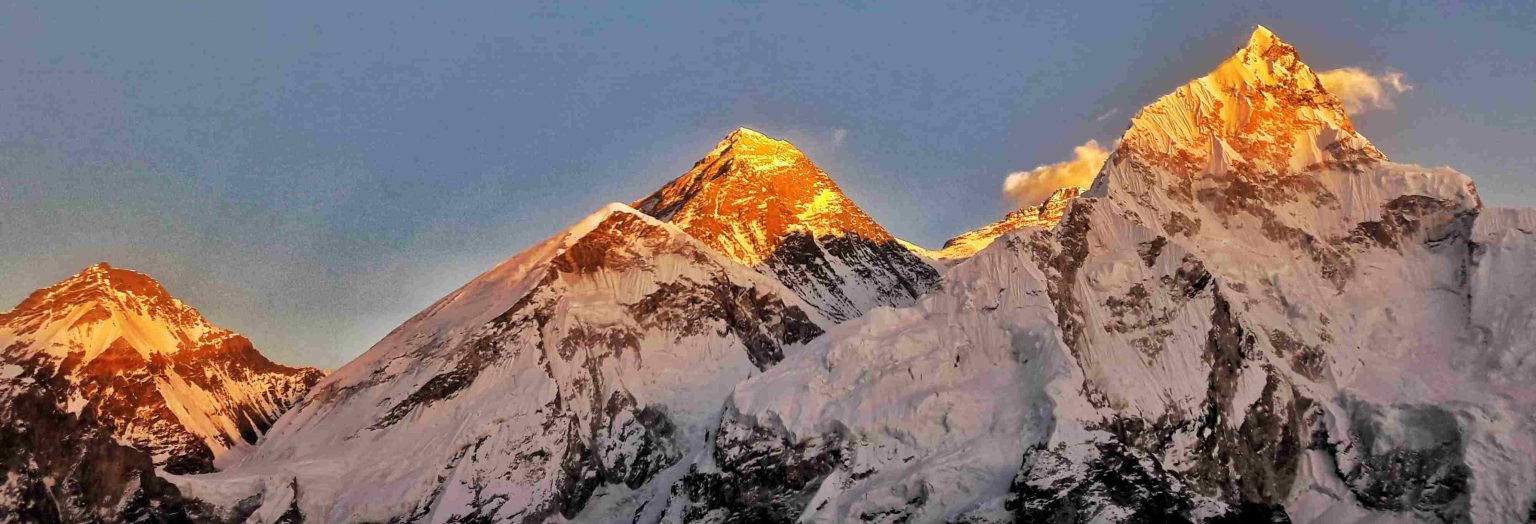Highlights of Gokyo Renjo La Pass Trek
- Explore less-crowded trails for a unique trekking experience.
- Witness breathtaking views of Everest, Lhotse, Cho Oyu, Ama Dablam, Makalu, and more from this high pass.
- Trek through diverse landscapes in this UNESCO World Heritage Site (Sagarmatha National Park).
- Interact with Sherpa, Rai, and Tamang communities for a rich cultural experience.
- Gokyo Lakes and Gokyo Ri: Enjoy stunning vistas and turquoise lakes on this trek.
- Trek close to the Tibet border and witness the massive Ngozumpa Glacier.
- Visit an ancient monastery (Thame Monastery) and learn about the local spirituality.
- Experience an alternative trek to Everest Base Camp, discovering hidden gems.
The Gokyo Renjo La Pass Trek is a 12 Days adventure that takes you through off-beat routes in the Khumbu region, offering a less crowded and awe-inspiring experience in the lap of the Himalayas. This trek leads you through the pristine landscapes of the Sagarmatha National Park, known for its towering peaks and rugged beauty.
The highlight of Gokyo Renjo la pass trek is undoubtedly crossing the high pass known as Renjo La (5345 meters, 17,536ft) which provides breathtaking panoramic views of iconic peaks like Mt. Everest, Lhotse, Makalu, Cho Oyu, Ama Dablam and sourounding peaks. This less-traveled path allows you to immerse yourself in the authentic local culture, interact with the Sherpa, Rai, and Tamang communities, and experience their warm hospitality.

Gokyo Renjo la trek begins with a scenic flight to Lukla, followed by a trek to Namche Bazaar and then further off the beaten path to Dole and Machhermo. You'll ascend to the beautiful Gokyo Lakes and summit Gokyo Ri for an incredible panoramic view. The trail then takes you to the Renjo La pass, near the Tibet border, providing a unique vantage point to witness the majestic Himalayas.
En route, you'll have the opportunity to visit Thame Monastery and witness the stunning Ngozumpa Glacier. Gokyo Lakes and Renjo La pass trek is a great alternative to the more popular Everest Base Camp trek, allowing you to explore the stunning landscapes and hidden gems of the Everest region while avoiding the crowds.
Overall, the Gokyo Renjo La Pass Trek promises an unforgettable adventure through the lesser-traveled paths of the Everest region, providing an immersive experience in the heart of the Himalayas.
The Best Time For Gokyo and Renjo la pass trek
The best time to trek the Gokyo Renjo La Pass is between October and November, and between March and May. During these months, the weather is generally clear and the views are spectacular. However, it is always a good idea to check the weather forecast before embarking on any trek, as conditions can change quickly in the mountains.
What to Expect on the Gokyo Renjo La Pass Trek
Gokyo Lakes and Renjo La pass trek that starts and ends in Kathmandu and takes approximately 12-14 days to complete. The trek takes you through dense forests, past glaciers and Gokyo lakes, Gokyo Ri and over high passes that offer stunning views of the surrounding peaks. Along the way, you will encounter a variety of cultures and communities, each with its own unique traditions and customs.
Preparing for the Trek
Gokyo and Renjo la pass trek is considered a strenuous trek and requires a good level of physical fitness. It is recommended that you start preparing for the trek several months in advance, by taking regular walks, doing strength and endurance training, and gradually building up your stamina. You should also familiarize yourself with the trekking equipment you will need, and make sure you have the necessary permits and visas.
Accommodations on the Trek
There are several options for accommodation on the Gokyo Renjo La Pass trek, including teahouses, lodges, and camping. Teahouses are the most popular option and offer basic but comfortable accommodation, as well as food and drink. Lodges are similar to teahouses but offer more amenities, such as hot showers and Wi-Fi. Camping is also an option, but requires a tent, sleeping bag, and cooking equipment, and is generally only recommended for experienced trekkers.
Conclusion
The Renjo La Pass trek is a challenging, but rewarding adventure and one that should be on every trekker's bucket list. With the right preparation and a little bit of courage, you can experience the beauty and majesty of the Nepalese Himalayas, and create memories that will last a lifetime. So what are you waiting for? Book your Gokyo Renjo La Pass Trekking today and start your journey to the top of the world!
